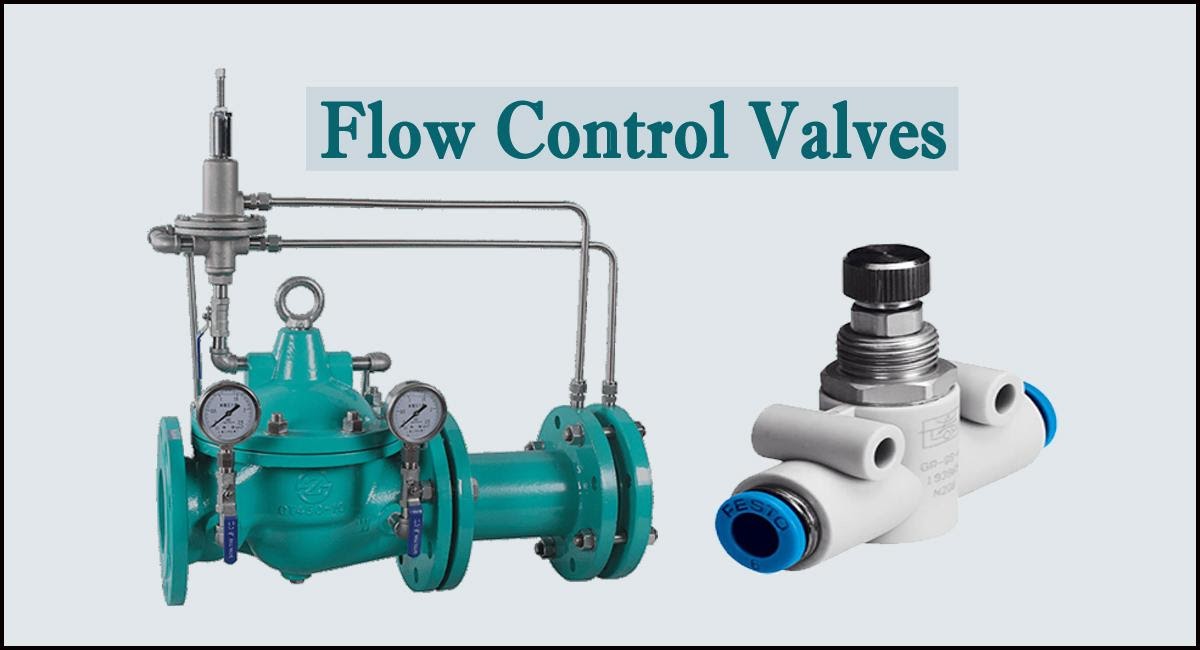Flow control valves are vital in regulating the flow of fluid within a channel. However, not all control valves can work under pressure. Thus, there are several types of control valves to cater to different pressure ranges, and types, The types of control valves are classed in series. Let’s check the difference in flow control valve and the series you can get for different uses.
Difference Between Pressure and Flow Control Valves
Control valves regulate the flow of fluids in a channel. Some of them control the flow rate, while others control the pressure of the fluid. Both ways, there’s some regulation involved. Below are the details of flow control valves and pressure control valves.
Flow Control Valve
These are valves that respond to the signals from a tool gauging the fluid flow. It’s a general term to refer to all valves that control and regulate the flow and some parameters.
Flow control valves have actuators and positioners. Globe valves with pneumatic actuation are standard in various firms. However, a few firms will use quarter-turn valves such as butterfly valves and ball valves.
These valves regulate the flow by opening, closing, or partially blocking the fluid passage.
Pressure Control Valve
Pressure control valves work with hydraulic pilots. They function by responding to water or pressure flow. Also, the changes make the valve open or close.
In a hydraulic system, the valves help the system lift objects. The amount of pressure determines the weight the hydraulic system can lift. Thus, the valve should be in excellent condition to tap in all the pressure.
The Series in Pressure and flow Control Valves
Flow valves and pressure valves have several series. Let’s check the details of each series.
Pressure and Chemfeed
These pressure valves are helpful in chemicals and feed systems. You use them in the chemical dosing, transfer, and processing of chlorine; Water companies use them in the chlorination process. The absence of this valve would lead to over-chlorination or under-chlorination. The valve partially blocks the flow of chemicals into the primary ingredient/fluid, either for purification or preservation.
Flow Control Valve
These control valves cover all applications. You can use them in virtually anything. However, they may be less effective in some cases, and you need to look for series that can work. However, some flow control valves are helpful for high purity and corrosive fluids.
SV Series Solenoid Valves
Solenoid valves do not need differential pressure to operate. They are helpful in high-temperature applications. SV valves made of CPVC have higher corrosion resistance as compared to valves made of PVC. They are closed designs that block fluid flow under normal conditions. The maximum temperature they can work with is 190℉, and the maximum inlet pressure is 120 psi.
AR Series Air Release Valves
These types of valves allow ga to escape from pipelines with no pressure. You must install them vertically at the highest point of the channel. You’ll know it since there’s an “air” arrow pointing up. As the unpressurized air escapes, the liquid will rise the pipes. The float won’t release unless the pressure on the inlet equals the atmospheric pressure on the outlet.
AV Series Angle Globe Valves
Angle globe valves are perfect for throttling, venting, and changing the flow direction. They are installed in tight places where you need a 90° flow direction change and no space for extra fittings. You assemble angle globe valves with silicone-free lubricant. Also, they can work with a pressure of 150 psi and at a maximum pressure of 70℉.
NVA Series Needle Valves
These valves help you to adjust flow to get drops. Then you can gauge the flow as drops per minute. If they are made with PVDF, you can use them in high purity and high heat levels applications. They work with 150℉ and 150 psi.
PR Series Pressure Regulator Valves
These valves are ideal when you are dealing with high viscosity fluids. The valves protect the system from damage caused by excess pressure. They are automatic valves that control line pressure. Also, they compensate for the inlet pressure variations.
LC Series Universal Stopcock Valves
These valves are helpful for on, off, restricted flow, and sampling applications. They are of six different types of end combinations. It would help if you assembled them with a silicone-free lubricant.
RV Series Pressure Release valves
These series are helpful in pneumatic applications. They keep the system stable by releasing excess pressure. They have a pressure release setting range of 10 psi to 200 psi- they can work with a maximum pressure of 300 psi.
IV Series Injection Valves
These valves help introduce chemicals to the primary fluid within the flow channel. You install them in a place where the chemicals will mix well with the fluid and prevent corrosion. They come in various designs where every design has a built-in ball check valve that prevents backflow.
CCS Series Calibration Cylinders
These valves are made of glass or PVC. They are helpful in chemical feed systems. You install the cylinders at the suction line towards the metering pump. The cylinders give you an accurate gauging of the pump’s output.
DAB Series Diaphragm Valve
These valves have a width range of ½ an inch to 6 inches. You can use them with threaded and flanged ends or true union sockets.
PBV Series Diaphragm Back Pressure Valve
These valves exert back pressure to the metering pump in chemical feed plants. Thus, it prevents cases of siphoning and varying dosing rates.
Conclusion
There are several types of flow control valves under each series. They all serve the purpose as per the explanation. You should select a valve that would suit your application.
Author Bio :
Naman Modi is a Professional Blogger, SEO Expert & Guest blogger at proteusind.com, He is an Award-Winning Freelancer & Web Entrepreneur helping new entrepreneur’s launches their first successful online business.


